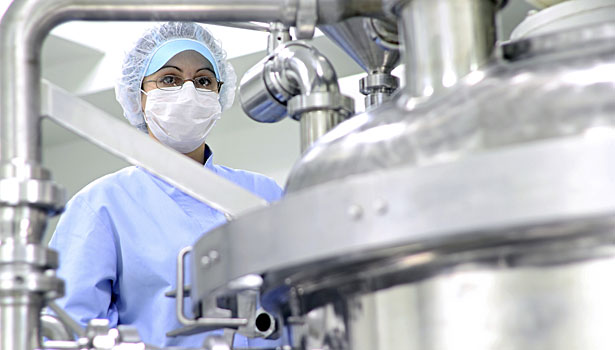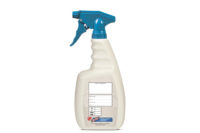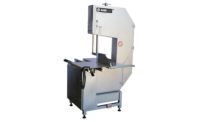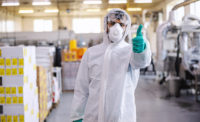Which is the greater threat to food safety: the bacteria on the employee or the food itself? Employee apparel today aims to reduce the risk of workers contaminating meat or poultry items while protecting employees from workplace accidents.
Certainly, it’s hard to imagine another workplace that could be as full of harmful pathogens and bacteria as a slaughterhouse. Therefore, apparel (and equipment) manufacturers are experimenting with adding self-sanitizing components or bioactive textiles and fibers as a pre-emptive measure. Hardworking antimicrobials are added to a piece of apparel or object to prevent degrading, odors or bacteria on the surface from growing.
“There are clearly applications that can justify the extra costs involved,” says Barry Michaels, president of B. Michaels Group Inc., a microbiology consulting firm in Palatka, Fla. “Many companies using these and related products consider it trade secret material as it allows them to gain an edge on competition. Likewise, we may not be aware of the various types of cross-contamination events these products aid in preventing because this is not something any company would be eager to share.”
Michaels notes every surface in a processing plant — from plastics, rubber compounds, synthetic elastomers, fabrics and metals — has a static charge that attracts the skin and hair that all workers shed, which could have bacteria and viruses in them.
“We have on average 22 square feet of body surface to protect with a worker’s uniform,” he says. “As the skin breaks down, we shed dead skin at the rate of hundreds of thousands of particles an hour. A single dirty hair or skin scale is loaded with bacteria. Here is, in essence, why worker apparel having antimicrobial properties makes a lot of sense: It is based on the fundamentals of the science involved.”
Hair restraints and boots, for example, are logical pieces of apparel to contain antimicrobials, Michaels says. He notes companies are developing and commercializing antimicrobials by trapping chlorine in materials that are charged every time they are washed; using antimicrobial compounds to prevent footwear, for example, from degrading and becoming moldy by latching onto the fabric, utilizing silver ion or nanosilver; and researching copper in woven materials.
“I would also mention materials with rechargeable nanostructures or fabric that is bleach rinse rechargeable, as this is a direction that the USDA is moving in for in-plant fabrics like conveyor belts,” Michaels says. “And this is a case of technology migrating from apparel to plant. Many companies are involved in nanosilver with FDA granting food-contact status.”
He adds that replacement costs of old materials can be an issue for the industry, but processors have a good sense of what’s important to invest in, such as self-sanitizing boots, protective head gear and more efficient gloves.
“The great challenge is, does the technology solve food safety problems?” he says. “There is no smoking gun or body count, so processors have to rely on firm microbial principles. For that reason, we probably won’t see new strict regulations on apparel other than that they need to be clean and laundered to pristine conditions before use.”
Troubleshooting electrical gear
In recent years, more awareness has been paid to the safety of electrical workers in processing plants. According to the Occupational Safety and Health Administration, electrocution is one of the top four causes of death for construction workers.
Simply put, anyone working around energized electrical equipment needs to be wearing arc flash clothing and flame-resistant clothes, says Jon Wallace, owner of Workplace Group, a Raleigh-Durham, N.C., management consulting group.
“Sometimes electrical workers are troubleshooting and working on equipment while it’s energized,” Wallace says. “The risk is having an electrical arc that could ignite clothing, so their gear needs to be arc resistant.”
Oftentimes, employees have this lifesaving gear in a duffle bag nearby — just 50 feet away, perhaps — but get tired of putting it on and taking it off.
“In the last three to five years, it’s become more popular to wear arc flash clothing, but you still see quite a few incidents of workers wearing cotton, short sleeves,” he says. “They should not only wear arc rated clothing, but wear voltage gloves and tools and arc flash face shields around energized equipment.”
In most cases, electrical workers should wear Hazard Risk Category 2 garments for daily wear, such as flame-resistant undergarments, shirt, pants and/or coveralls; arc-rated arc flash hood or hard hat with arc-rated face shield; safety glasses or goggles; hearing protection; arc-rated leather gloves or insulating gloves with protectors; and leather shoes or dielectric overshoes.
“They should wear it throughout the day so it’s there when they really need it,” Wallace says.
What does protective gear protect, exactly?
According to OSHA’s “Safety and Health Guide for the Meatpacking Industry,” protective gear helps reduce workplace injuries. Here is what it is covering up:
Safety shoes or boots:This footwear must have toe guards and slip-resistant soles to prevent falls on slippery floors.
Protective gloves: When workers handle meat, they must wear gloves to help reduce the spread of infectious diseases. They also help prevent chemical burns for those using cleaning compounds. Workers who use knives must use metal mesh gloves and aprons and wrist and forearm guards to protect themselves from knife cuts.
Safety helmets: This lifesaving headgear should be worn by workers involved in hoisting and shackling operations, specifically helmets that meet the American National Standard Requirements for Protective Head Wear for Industrial Workers. Barricade or shield assembly can also prevent injuries from falling or moving animals and/or materials.
Respirator: If an employee is exposed to toxic chemicals, a suitable respirator should be provided to prevent inhalation of harmful substances.
Ear plugs: These must be provided because meatpacking plants’ machines and equipment can be too noisy.
Face shields or goggles: For workers who mix or handle cleaners, this equipment prevents chemical burns. Goggles can also be required during boning, trimming and cutting operations to protect employees’ eyes.








